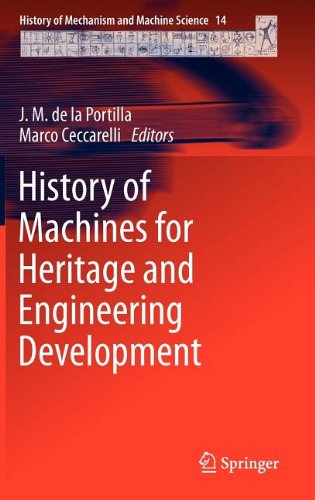

Most ebook files are in PDF format, so you can easily read them using various software such as Foxit Reader or directly on the Google Chrome browser.
Some ebook files are released by publishers in other formats such as .awz, .mobi, .epub, .fb2, etc. You may need to install specific software to read these formats on mobile/PC, such as Calibre.
Please read the tutorial at this link: https://ebookbell.com/faq
We offer FREE conversion to the popular formats you request; however, this may take some time. Therefore, right after payment, please email us, and we will try to provide the service as quickly as possible.
For some exceptional file formats or broken links (if any), please refrain from opening any disputes. Instead, email us first, and we will try to assist within a maximum of 6 hours.
EbookBell Team

4.3
38 reviewsThis volume contains a selection of papers whose content have been presented at the International conferences CIPHI on Cultural Heritage and History of Engineering at University of Las Palmas de Gran Canaria in the Canary Islands, Spain, in recent years.
The conference series is aimed at bringing together researchers, scholars and students from a broad range of disciplines referring to the History of Engineering and Cultural Heritage, in a unique multidisciplinary forum to stimulate collaboration among historians, architects, restaurateurs, and engineers.
These papers illustrate, by treating specific emblematic topics and problems, technical developments in the historical evolution of engineering concerning cultural heritage. Thus, emphasis is given to a discussion of matters of cultural heritage with engineering history by reporting authors’ experiences and views.
Topics treated include: reutilization of industrial heritage: the unique example of the Royal Segovia Mint in Spain; the image of factories; Pedro Juan De Lastanosa and “the twenty-one books of devices and machines of Juanelo”; the historical development of paper-mills and their machines in South Latium during 19th century; a virtual reconstruction of a wave-powered flour mill from 1801; 3D modelling and animation study of the industrial heritage wonders; a new model of the hydraulic machine known as “el artificio de Juanelo”; and the mystery of one Havana portrait, on the first steam machine in Cuba.
This work has been made possible thanks to the invited authors who have enthusiastically shared this initiative and who have spent time and effort in preparing the papers in much more detail that in the conference presentations.